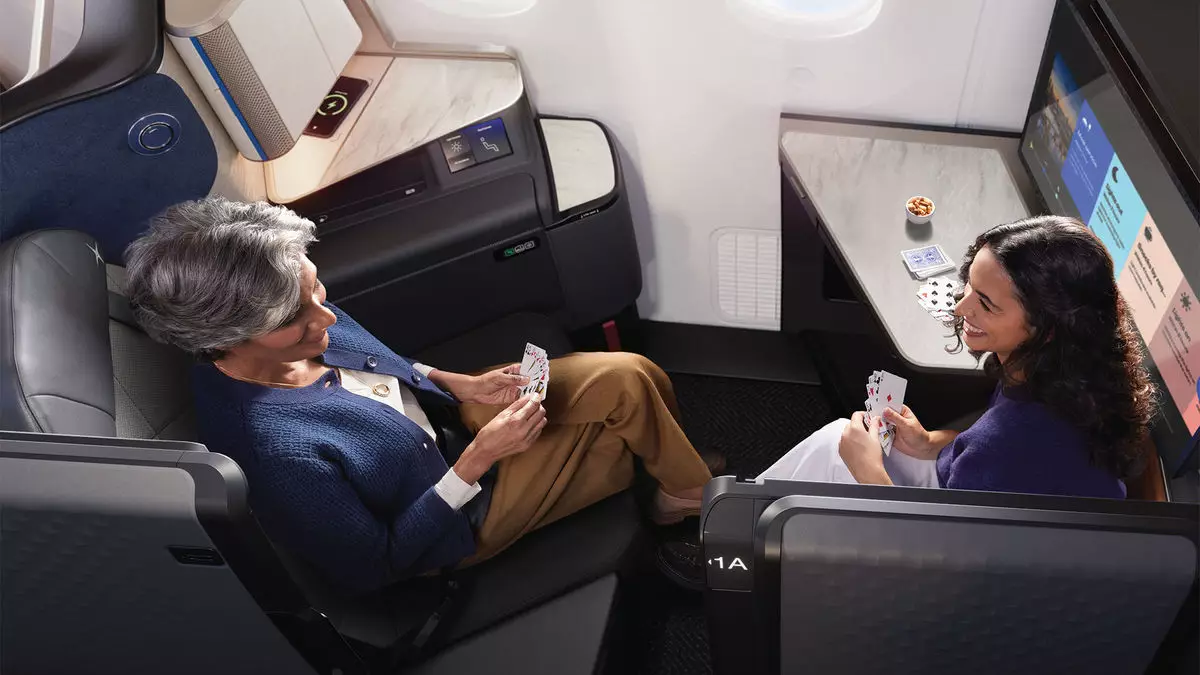United Airlines is making waves with its latest initiative: the introduction of the 787-9 Dreamliner boasting an exciting new seat configuration that leans heavily towards luxury. While understanding that airlines grappled with revenue changes during the pandemic, United’s strategic shift towards a greater emphasis on business-class segments signals a sweeping change in air travel. The revamped aircraft will not only feature more premium seats but will also reduce the economy seat count dramatically. As travel markets recover and high-income travelers resume their explorers’ routes, this move could bolster United’s profitability in the competitive aviation sector.
Introducing Polaris Studios
At the heart of this redesign is the debut of the Polaris Studio, a fresh take on business-class seating that promises a heightened experience for passengers. These suites will not only enhance comfort but are designed to improve the flying experience overall. Each Polaris Studio is about 25% larger than existing options, flaunting enhanced privacy with personal doors and a 27-inch entertainment screen, also providing additional amenities like a caviar course and luxury skincare offers. This bold gambit to elevate the business-class experience allows United to target affluent travelers, enhancing their probability of capturing a larger segment of high-yielding travelers, which could compensate for the dwindling economy seating options.
Reflecting Industry Trends
United’s decision mirrors an industry-wide shift towards premium cabin enhancements. Airlines globally have recognized that optimizing their cabin layouts and investing in luxurious passenger experiences can yield greater financial returns despite shrinking economy class capacities. American Airlines has similarly announced upgrades featuring luxury suites, suggesting a resurgence of premium travel. By repositioning itself as a front-runner in offering lavish in-flight experiences, United Airlines stands to attract discerning travelers who prioritize comfort and quality over pricing.
Flight Attendants Voice Concerns
However, not all feedback resonates positively with United’s latest changes. The Association of Flight Attendants has raised alarms regarding the new luxurious offerings, asserting that these upgrades should involve input from the cabin crew. Their concerns resonate with the intrinsic relationship between employee satisfaction and passenger experience. As United focuses on appealing to affluent customers, aligning cabin crew negotiations with these lofty pursuits is essential. Efficient operation relies on a happy and supported workforce—one cannot flourish independently of the other.
Competitive Edge or Risky Gamble?
While the lavishness of the Polaris Studios positions United as a forerunner in the air travel luxury landscape, it raises pressing questions: Will shifting to a premium-focused seating arrangement alienate budget-conscious travelers? By offering only 90 standard economy seats compared to a significant reduction from its previous configurations, there’s a risk that United may lose accessibility to a broader customer base. Balancing luxury offerings with affordable options may prove to be a precarious tightrope. As the aviation landscape evolves, this bolder United Airlines approach could either redefine its brand or ultimately alienate a segment of its traditional passenger base. The coming years will surely reveal the implications of this daring transformation in cabin configurations and essential crew interactions.


Leave a Reply